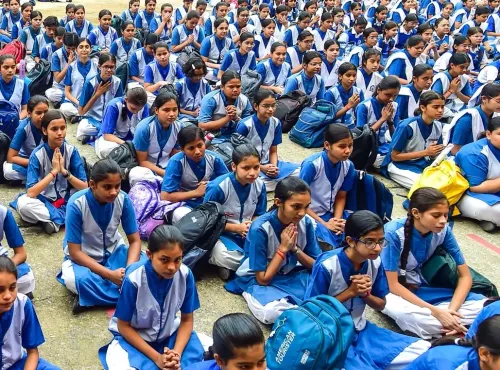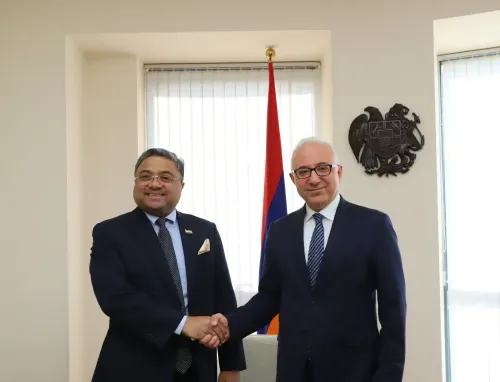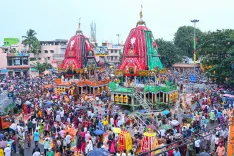What Did CDS and Army Chief Discover at Longewala & Suratgarh Military Station After Operation Sindoor?

Synopsis
Key Takeaways
- CDS General Anil Chauhan and Army Chief General Upendra Dwivedi visited military stations post-Operation Sindoor.
- Focus on troop morale and operational readiness.
- Strategic discussions highlighted the need for vigilance in a changing security landscape.
- Longewala holds historical significance from the 1971 India-Pakistan war.
- Operation Sindoor showcased India's military coordination and deterrence capability.
Jaipur, May 19 (NationPress) Following the completion of Operation Sindoor, Chief of Defence Staff (CDS) General Anil Chauhan and Army Chief General Upendra Dwivedi visited the India-Pakistan border on Monday to evaluate the current situation and uplift the spirits of the troops.
CDS General Anil Chauhan made a stop at the strategically vital Suratgarh Military Station on the western front. He engaged with soldiers stationed in the area, praising their commendable morale, bravery, and professional readiness.
He expressed unwavering trust in their capability to tackle future threats with swift and decisive measures. During his visit, soldiers briefed the CDS about newly deployed air defence systems and technological assets utilized during Operation Sindoor.
General Chauhan also engaged in strategic discussions with senior military commanders and commended the exemplary courage and precision with which the troops neutralized hostile threats during the operation.
He underscored the selfless dedication, unwavering resolve, and operational excellence of the Indian forces, emphasizing that such conduct continues to uphold the highest traditions of the Indian Army. He reiterated the importance of remaining vigilant and prepared in light of changing regional security dynamics.
Simultaneously, Army Chief General Upendra Dwivedi arrived at Jaisalmer Airport on Monday and traveled by helicopter to the historic Longewala post, a site rich in military significance.
At Longewala, General Dwivedi interacted with soldiers from the Konark Corps, lauding their bravery, steadfast commitment, and successful operational collaboration with the Indian Air Force (IAF) and Border Security Force (BSF) during Operation Sindoor.
The Army Chief also reviewed joint operations conducted across the desert expanse from Jaisalmer to Kutch, which involved the rapid deployment of surveillance systems and air defence units. These initiatives not only thwarted enemy attempts but also redefined operational superiority on the western front.
He particularly acknowledged the successful neutralization of enemy drones, averting potential threats in the desert region.
General Dwivedi recognized the resilience of troops operating under extreme desert conditions and reaffirmed the Army’s steadfast commitment to preserving national sovereignty.
Operation Sindoor, a high-intensity defensive maneuver along the India-Pakistan border, exemplified rapid coordination between the Army, IAF, and BSF units, delivering a strong message of deterrence.
This operation showcased India’s operational readiness and strategic depth in responding to cross-border provocations. Following Operation Sindoor, Prime Minister Narendra Modi is set to visit Bikaner, Rajasthan, on May 22.
During his visit, he will offer prayers at the Karni Mata Temple in Deshnok, inaugurate the newly modernized Deshnok Railway Station, and potentially engage with soldiers at the Nal Airbase.
The Longewala post holds a pivotal position in Indian military history. During the 1971 India-Pakistan war, a mere 120 Indian soldiers valiantly defended the post against a force of 2,000 Pakistani troops. With support from the Air Force’s Hunter aircraft, which destroyed 45 Pakistani tanks, the Indian Army registered a significant victory, transforming Longewala into a symbol of unparalleled bravery.









